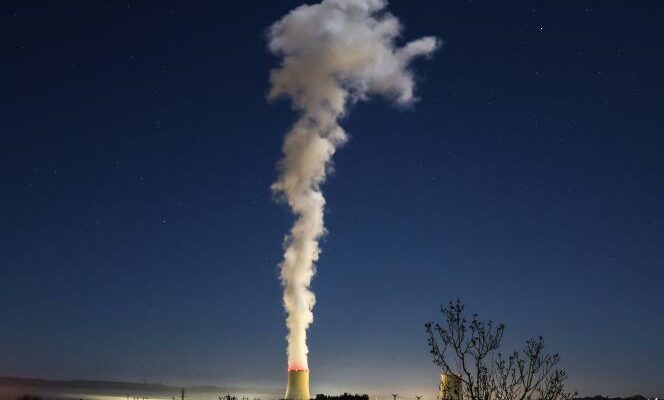The more winter advances, the more the disaster scenario of a blackout in France recedes. The increase in power of the nuclear fleet, the main source of electricity in the country, further removes the anxiety of a general power cut.
Of its 56 reactors, the operator EDF has chained the restarts, going from thirty-two units shut down for special control or conventional maintenance operations in August 2022, to twelve, Wednesday January 11. “We are holding the restart of the reactors”, estimated the Minister for Energy Transition, Agnès Pannier-Runacher, during a hearing in the Senate, the same day. Except, according to her, for “two or three reactors”, whose return would take place in March.
The nuclear fleet can again mobilize a power of around 45 gigawatts (GW), out of a theoretical capacity of 61 GW. In progress, but still lower compared to previous winters, with an availability rate close to 73% now, against 95% between December 2010 and February 2011, to cite the peak of the past decade.
In fact, EDF is emerging from a historically weak year 2022. Its nuclear production in France has reached a low of between 275 and 285 terawatt hours (TWh), according to projections two months ago, after downward revisions. The electrician hopes for better in 2023 (between 300 and 330 TWh), then in 2024 (between 315 and 345 TWh). Just before the Covid-19 health crisis, the annual level was around 380 TWh between 2016 and 2019. Not to mention the 2005 record: 430 TWh.
In the meantime, of course, two reactors have disappeared. Those of the Fessenheim power plant (Haut-Rhin), closed by political decision in 2020. Another is slow to appear. The Flamanville EPR (Manche), expected as the first third-generation reactor, is accumulating technical setbacks: its commercial start-up has now been postponed to mid-2024.
A “stress corrosion” problem
But the “main explanatory factor for low nuclear availability” is elsewhere, recalled, in September 2022, the national manager of the Electricity transmission network (RTE). This is an unexpected phenomenon, first detected in October 2021 on the first reactor of the Civaux power plant (Vienne): this cracking problem, known as “stress corrosion”, threatens emergency pipes intended for the cooling.
In recent months, the multiplication of stops for checks or repairs has called on around 600 welders, including a one-time reinforcement of around a hundred North American technicians from subcontractors.
You have 53.89% of this article left to read. The following is for subscribers only.
